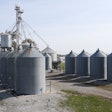
Russia has one of the fastest growing compound feed industries in the world. With a total production level of almost 20 million metric tons of compound feed per year, the country is among the top ten feed-producing countries on the planet. And, this does not include production from the “shadow economy,” which some believe nearly matches the amount of feed officially produced.
Rosstat, the Russian State statistic service, reports that 58 percent of feed produced in the country is going to meet the needs of the poultry industry, 26 percent of the total amount is being sold to or being produced by pig farms, and 13 percent is being fed to cattle. With all sectors of the livestock in the country developing rapidly, the production of animal feed and premix is showing an upward trend as well.
Anticipated growth by 2020
Currently, the largest compound feed producing region in the country is the Belgorod region, the location of more than 20 percent of the total pig population in the country and located on the most fertile land in the Central Federal District. It currently produces about 3.6 million metric tons of feed – 18 percent of the total volume produced in the country. In the list of top producers, it is followed by the Leningrad Region and Krasnodar Territory, producing 6.7 percent and 4.9 percent out of the total volume, respectively.
According to experts, Russia is able to produce compound feed in the required amounts to meet all the needs of the country’s domestic livestock producers. However, some regions – especially the Far East Federal District of the country – are still importing feed, mostly from China. Chinese feed is significantly cheaper, but the quality is often lower than Russian feed. Experts at the Russian Ministry of Agriculture predict that by 2020, Russia will become a large exporter of feed, as the volume of its production is expected to rise by nearly 400 percent during the coming seven years.
The shadow sector
A very important feature of the Russian compound feed market is the presence of the significant and growing “shadow” sector. According to analysts, the shadow sector had a volume somewhere between 20 and 24 million metric tons in 2012, which actually exceeds the level of the legal Russian compound feed market. The shadow sector produces not only feed, but also feed mixtures and high-quality compound feed. The shadow market consists of hundreds of small and average feed producing enterprises that have not registered their activity in order to avoid paying taxes. Experts believe that in coming years, enterprises will start to come out of the shadow and begin to work officially as the government offers significant subsidies and preferential tax treatment to all players in the agricultural market.
An important feature of the Russian compound feed market is the amount of raw grain used in its compound feed. In European compound feed, the share of grain is usually not in excess of 45 percent. In Russia, this figure could be more than 70-75 percent, while the share of meal and cattle cake is roughly three to four times lower than in Europe. This creates a high dependence on the grain industry.
Russia’s market volume in 2013 is expected to exceed 20 million metric tons. For the last five years, the volume of the market has been growing by approximately 10 percent per year on average. In coming years, this figure will significantly rise according to analysts of the Ministry of Agriculture, who predict that by 2020, Russia should be producing about 100 million tons of compound feed annually.
Expansion by Miratorg
Currently, the largest producer of animal feed in Russia is the agricultural holding company Miratorg. By the end of 2012, the volume of production of compound feed of the company was 768,850 metric tons, 80.7 percent more than in 2011. In late 2012, it commissioned a third feed mill in the Belgorod region, which will bring the production capacity of the holding to 1.1 million metric tons per year. Also in 2013, the management plans to complete construction of a fourth feed mill, which will have an annual capacity of 360,000 metric tons. This will greatly increase Miratorg’s lead over its main competitors and bring the company’s feed production volume to 1.46 million metric tons per year, a record for the Russian feed market.
To date, the total investment by Miratorg in Russian feed production amounts to RUB7 billion (USD235 million). A distinctive feature of Miratorg’s feed mills is that they are equipped with the most modern equipment in the country. Highly automated factories allows for fewer staff than similar Russian enterprises. Miratorg uses Brock, USA, for grain storage; FAO, France, for transport systems and grain drying units; and Ottevanger, Holland, for its process equipment. Currently, Miratorg produces feed mainly for its own consumption – in particular to meet the needs of 2.5 million pigs that are growing on farms owned by the company. However, in the future the company may start selling feed, and is expected to supply it for export.

















